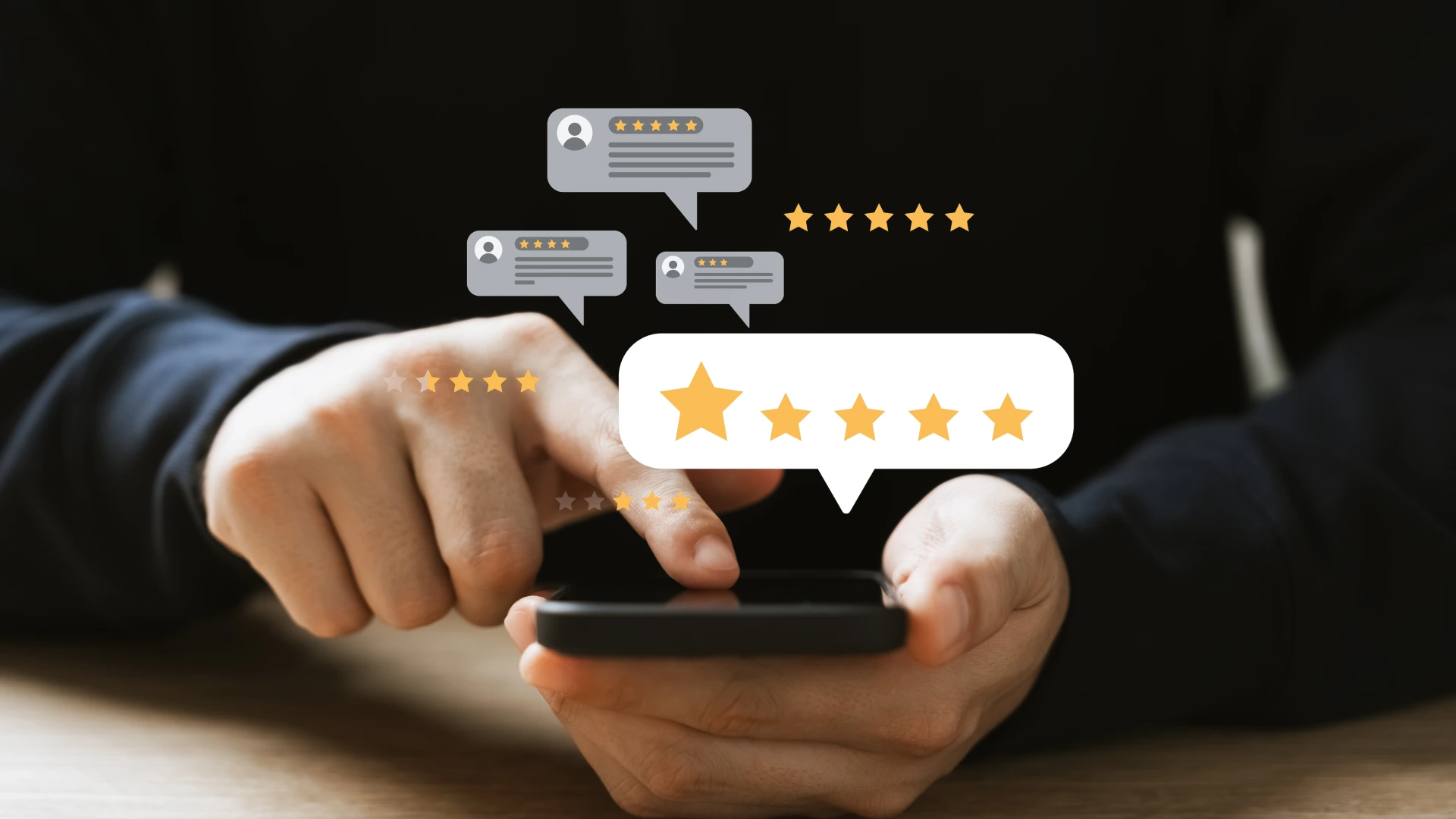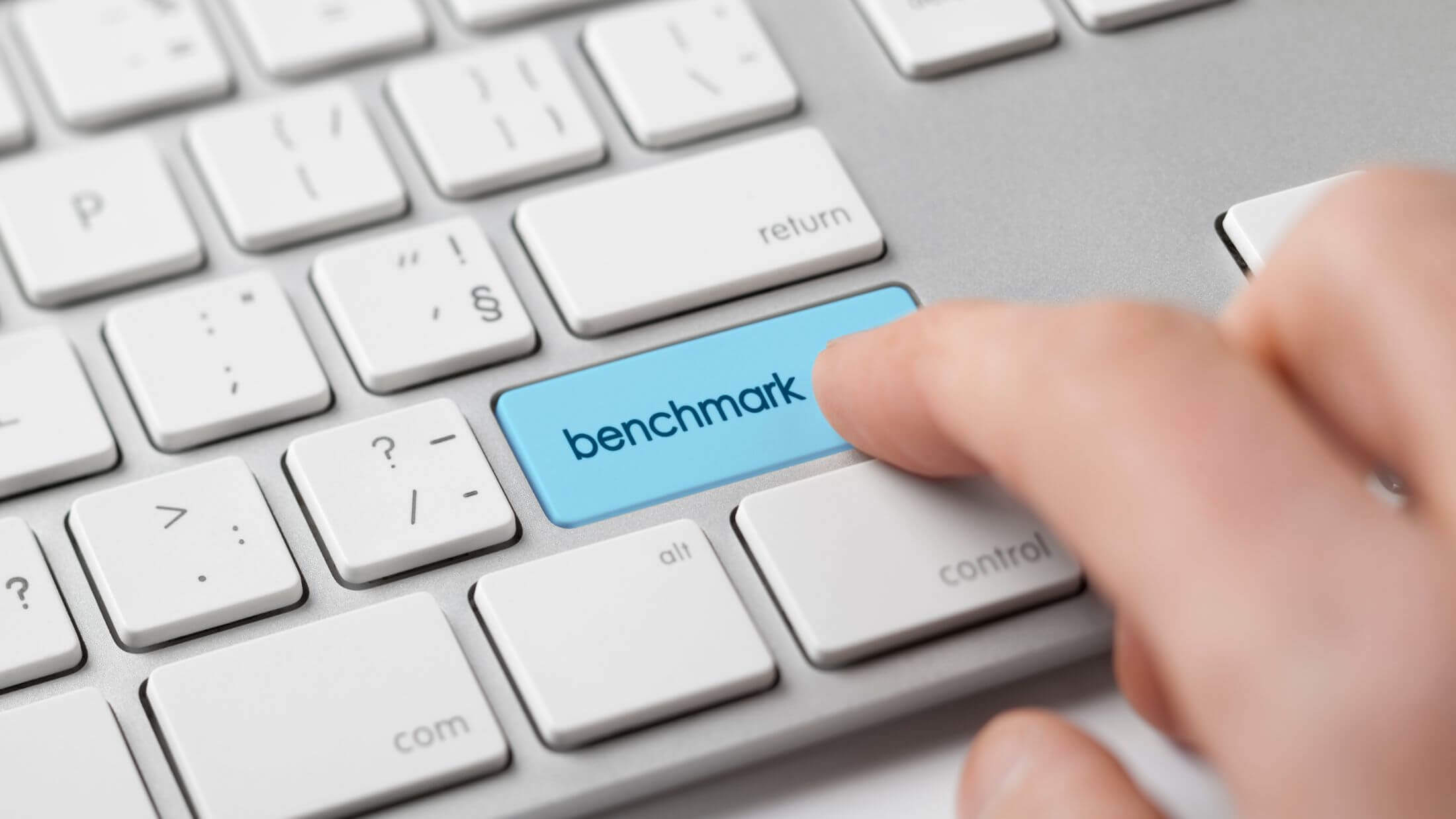We’ve been tracking a law firm whose SEO metrics would make any agency run for the hills. Traffic down 80%. Rankings scattered. Four agencies already gave up on them.
But when we asked about actual new cases last month, they’d increased compared to the previous year. Two cases came directly from ChatGPT recommendations. Others from YouTube videos. Some from Reddit discussions. None of this shows up in traditional SEO reports.
That’s when we realized: SEO benchmarking is measuring performance in one stadium while the game has moved to five different fields.
That’s also when we realized we needed to completely reimagine how we benchmark SEO. Not just for our clients, but for ourselves. The Omni-Search Attribution Framework is what emerged from months of asking: If we were building SEO measurement from scratch for today’s reality, what would it look like?
Modern SEO benchmarking requires tracking five key areas: total search visibility across all platforms where people search, platform presence where your buyers actually look, zero-click capture rate for featured snippets and AI answers, cross-channel attribution connecting search to pipeline, and brand search velocity showing if people seek you out by name. The companies succeeding today measure discovery everywhere people search, not just Google rankings, and they tie it directly to revenue rather than vanity metrics like total traffic or domain authority.

The benchmarking crisis: Measuring yesterday’s game
Here’s what actually happened to search in the last two years, backed by real data.
Recent studies show 58-60% of Google searches now end without a click. Not 20% or 30%. The majority. Users get their answer from featured snippets, People Also Ask boxes, knowledge panels, or AI Overviews and never visit a website.
Meanwhile, over 2 in 5 Americans have used TikTok as a search engine. For Gen Z, that number jumps to 64%. They’re not searching for websites. They’re searching for answers in video format. (Yes, your next customer might find you through a 15-second video.)
Reddit’s visibility in Google search results has surged dramatically in 2024, with threads dominating commercial queries. Instagram is where people research restaurants. 56% of product searches start on Amazon, not Google.
Your SEO dashboard shows you rankings and traffic for one shrinking slice of this pie. You’re benchmarking your performance in Google’s organic results while your audience has scattered across a dozen different discovery platforms.
The law firm we mentioned? They stopped trying to win the old game and started playing the new ones. While competitors fought for traditional rankings, they got cited in ChatGPT responses. They answered questions on Reddit. They created YouTube explainers. Their “failed” SEO became multiple streams of qualified leads.
We’ve seen this pattern everywhere: clients getting leads from Reddit we couldn’t track, YouTube showing up constantly in “how did you hear about us” surveys, ChatGPT recommending companies that don’t even rank page one. The measurement gap became impossible to ignore.
The Omni-Search Attribution Framework: A 5-bucket scorecard for modern search
Stop measuring single-channel vanity metrics. Start measuring discovery and demand across platforms, then prove which touchpoints move revenue.
This framework is aspirational by design. It represents where measurement needs to head, not where most companies are today.
Bucket 1: Total Search Visibility (Target: 20%+ share)
This measures your share of voice across all platforms where your audience searches.
Formula: Total Visibility = Σ(Platform Visibility × Platform Weight)
How to measure:
- Build a tracked intent set of 50-100 queries that represent buyer needs
- Monthly, check your visibility:
- Google: Track impressions across your intent set in GSC (note: “share” requires comparing to competitors via third-party SOV tools or treating as directional index)
- YouTube: Search impressions from YouTube Analytics
- TikTok: Search appearances from analytics plus manual sampling
- Reddit: Thread presence for commercial intents (manual quarterly audit)
- AI: Share of answer percentage (see Bucket 3)
- Weight by platform importance to your audience
- Roll up to a single visibility percentage
Setting platform weights: Review your last 100 opportunities and analyze the “How did you first hear about us?” field to estimate platform mix. Start with this real data, then revisit quarterly as patterns emerge.
Example calculation: If you appear in 30% of Google searches, 10% of YouTube searches, 5% of TikTok searches, and your audience splits 60/30/10 across those platforms: Total visibility = (30% × 0.6) + (10% × 0.3) + (5% × 0.1) = 21.5%
Most companies find their initial calculation surprisingly low. That’s normal and indicates opportunity.


Bucket 2: Platform Presence Index (Target: 80+ score)
Coverage and completeness where buyers actually search.
Formula: Platform Presence Index = Average platform score × 10
Score out of 100 based on:
- Google Business Profile: Completeness, reviews, posts (15 points)
- Priority directories: Presence in top 10 for your industry (20 points)
- YouTube channel: Optimized channel, regular content, playlist structure (15 points)
- TikTok profile: SEO-optimized bio, consistent posting (10 points)
- Reddit footprint: Active in relevant communities (10 points)
- Product marketplaces: Amazon, G2, Capterra if relevant (15 points)
- Industry-specific platforms: Houzz, Avvo, Zillow, etc. (15 points)
Simple audit process: Create a spreadsheet. List every platform where competitors appear. Score yourself 0-10 on each for completeness. Average and multiply by 10 for your index.
This is often the easiest bucket to improve quickly. Claiming and optimizing existing profiles can boost your score 20-30 points in a week.
Bucket 3: Zero-Click Impact (Target: 40%+ capture)
Two critical sub-metrics that actually matter.
SERP Feature Capture Rate:
- Track what percentage of your intent set triggers featured snippets, People Also Ask, local packs, or video carousels
- Measure how often you own these features
- Formula: SERP Feature Capture = (Features you own ÷ Features available) × 100
- Check monthly via Semrush or manual audits
Share of Answer (AI):
- Sample 20 high-value queries monthly across ChatGPT, Claude, Perplexity, and Google AI Overviews
- Document if you’re mentioned, recommended, or cited
- Track position in response and citation source
- Formula: Share of Answer = (Mentions ÷ Total queries checked) × 100
AI sampling methodology: Use the same 20 queries with identical wording each month. Log the AI model version, date tested, and take screenshots. This ensures reproducibility and tracks changes over time.
AI summaries appear in roughly 1 in 5 Google searches; when present, users click traditional links ~8% of the time versus ~15% without a summary. This makes both SERP features and AI citations critical for visibility.
Together, these metrics tell you if you’re winning the zero-click game or just watching from the sidelines.
Most companies discover competitors being recommended in AI responses for queries they didn’t even know existed.
Bucket 4: Cross-Channel Attribution to Pipeline (Target: varies by model)
Stop guessing. Start proving which search touchpoint drives revenue.
Key formulas:
- Search-influenced pipeline = Pipeline with any search touchpoint ÷ Total pipeline
- Platform ROI = Platform-sourced revenue ÷ Platform investment
- Close rate by source = Platform conversions ÷ Platform opportunities
Setup required:
- GA4 with proper UTM tracking and first-touch plus last non-direct attribution models
- CRM integration with offline conversion imports
- Hidden form fields capturing true source
- Sales team trained to ask “How did you first hear about us?” and actually record answers
Metrics to track:
- Search-influenced pipeline: Any opportunity with search in the journey
- Search-sourced pipeline: Opportunities where search was first touch
- Platform-specific close rates: Which search source converts best
- Time to SQL by source: YouTube viewers vs Google visitors vs AI mentions
Reporting format: “Search influenced $2.3M in pipeline this quarter (47% of total), with YouTube driving highest-quality leads at 31% close rate versus 18% for traditional organic.”
B2B companies often find YouTube drives their highest-quality leads, though the volume may be lower than traditional search.

Bucket 5: Brand Search Velocity (Target: 10%+ monthly growth)
The ultimate indicator: Are people looking for you by name?
Formula: Brand Velocity = (Current 4-week avg impressions – Prior 4-week avg) ÷ Prior 4-week avg × 100
Multi-source tracking:
- GSC brand query impressions (4-week rolling average)
- Google Trends index for your brand versus competitors
- Direct traffic correlation with platform campaigns
- Social media brand mentions
- “Dark social” indicators (unexplained traffic spikes after content goes viral)
The compound effect: When someone discovers you on TikTok, researches on YouTube, then searches your brand name on Google, that’s the modern buyer journey. Brand velocity captures this multiplier effect that traditional attribution misses.
The maturity ladder: Where are you now?
Not everyone needs to be Gold. But everyone needs to know where they stand.
Full transparency: Nobody’s executing all five buckets perfectly yet. Not us, not anyone. But the companies starting to track even 2-3 of these metrics are seeing patterns their competitors miss entirely.
Bronze Level (Months 1-3)
You’re here if: Still tracking traditional SEO metrics only
Benchmarks to hit:
- Total visibility: 10%+
- Platform presence: 50+ index
- Zero-click capture: 20%+
- Attribution: Basic first-touch tracking
- Brand velocity: Establishing baseline
Focus: Install tracking, claim profiles, audit current state
Starting point: Most companies are here without realizing it. Recognition is the first step toward improvement.
Silver Level (Months 4-9)
You’re here if: Measuring across platforms but not connecting to revenue
Benchmarks to hit:
- Total visibility: 20%+
- Platform presence: 70+ index
- Zero-click capture: 40%+
- Attribution: Multi-touch with CRM integration
- Brand velocity: 5% monthly growth
Focus: Optimize for featured snippets, build YouTube presence, test Reddit
The reality: This phase requires patience. Results aren’t always immediately visible, but the foundation you’re building here determines future success.
Gold Level (Months 10+)
You’re here if: Full visibility and attribution, optimizing for pipeline quality
Benchmarks to hit:
- Total visibility: 30%+
- Platform presence: 85+ index
- Zero-click capture: 60%+
- Attribution: Full pipeline visibility with quality metrics
- Brand velocity: 10%+ monthly growth
Focus: AI optimization, platform-specific content, scaling what converts
Reality check: Very few companies have reached this level. Those approaching it are typically market leaders investing significant resources in measurement and optimization.


The 90-day implementation plan
Week 1-2: Instrument and audit
- Set up enhanced tracking in GA4
- Audit all platform presences
- Build your 50-query intent set
- Document baseline metrics
- Install call tracking
Week 3-4: Establish baselines
- Run first total visibility calculation
- Score platform presence index
- Check zero-click capture rate
- Sample AI responses
- Set up CRM integration
Month 2: Quick wins
- Claim missing directory listings (often the easiest 20 points available)
- Optimize for featured snippets on money queries
- Create FAQ schema markup
- Start Reddit participation with valuable contributions
- Launch YouTube channel if missing
Month 3: Platform plays
- Create first YouTube tutorial series
- Test TikTok for discovery content
- Build relationships with directory sites
- Implement review generation system
- Run first AI citation audit
By day 90, you’ll have visibility across all five buckets and clear data on what’s actually driving pipeline.
The complexity can feel overwhelming initially. That’s normal. Focus on progress, not perfection.
The reality check: What this actually takes
Let’s be honest about the effort required.
Initial setup: 20-25 hours to build tracking, audit platforms, and establish baselines. This includes technical setup, intent research, and platform audits. Shortcuts here will compromise your data quality.
Monthly maintenance: 10-15 hours for tracking, reporting, and optimization. This covers platform monitoring, AI sampling, and attribution analysis.
Platform content creation: 20+ hours monthly if you’re serious about YouTube, TikTok, or Reddit. Native content can’t be faked. Each platform requires authentic engagement.
Most companies won’t invest this time. They’ll keep tracking keyword rankings while wondering why phone calls are declining.
That’s your competitive advantage.
But here’s the thing: Even tracking 2-3 buckets puts you ahead of 90% of competitors. You don’t need perfection. You need direction.
Common mistakes to avoid
Treating all platforms equally. Your audience might be 80% YouTube, 20% everything else. Benchmark accordingly.
Ignoring platform-native behavior. TikTok SEO isn’t Google SEO with shorter content. Each platform has unique discovery mechanisms. We’ve seen many companies learn this through trial and error.
Over-indexing on AI. Yes, track it. No, don’t abandon everything else for ChatGPT optimization. AI summaries appear in roughly 1 in 5 Google searches, and while direct referrals from AI platforms are growing fast (up 357% year-over-year), they still represent a small share of overall search traffic compared to traditional channels.
Measuring activity, not impact. Publishing on TikTok isn’t success. Driving pipeline from TikTok is success.
Perfecting measurement before acting. Start with directional data. Perfect attribution is impossible anyway. The best insights come from starting imperfectly and improving over time.
Trying to do everything at once. Pick two buckets. Master them. Add more gradually. This is a marathon, not a sprint.

Frequently asked questions
How do I track mentions in AI responses efficiently?
Start with monthly manual checks of your top 20 commercial queries. Use a spreadsheet with screenshots. Several tools claim automation but we’ve found manual checking more reliable for now. Budget 2-3 hours monthly until better tools emerge. The insights often justify the effort.
What’s a good “share of answer” benchmark for AI mentions?
For bottom-funnel commercial queries, aim for 30%+ appearance rate. For brand terms, you should appear 80%+ of the time. For educational queries, 15-20% is strong. With AI summaries appearing in roughly 1 in 5 Google searches and reducing click-through rates when present, being cited becomes increasingly valuable for visibility.
Should I create separate content for each platform?
Yes and no. Core information can be repurposed, but format must be native. Your YouTube tutorial becomes a TikTok quick tip, Reddit detailed answer, and featured snippet on Google. Same expertise, different packaging.
How do I prove ROI if customers touch multiple platforms?
Use a “search-influenced” metric that captures any touch, not just last-click. In your CRM, track first touch, key middle touches, and last touch. Report the full story: “Customer discovered us on TikTok, researched on YouTube, converted via brand search.”
What if my audience isn’t on TikTok or Reddit?
Perfect. Focus where they are. B2B might be LinkedIn and YouTube. Local services might be Google and Facebook. The framework adapts. Track where your buyers search, not every platform that exists.
Is the Omni-Search Attribution Framework fully proven?
We’ll be honest: This framework is emerging from what we’re seeing work, not a fully proven system we’ve perfected. We’re building it alongside our clients as we all adapt to this new reality. The companies implementing even parts of it are seeing results their competitors miss. Perfect implementation doesn’t exist yet, but waiting for perfection means falling further behind.
The path forward: Beyond traditional SEO
SEO benchmarking isn’t dying. It’s evolving from a single-channel scorecard to a multi-platform discovery system.
The companies winning today understand that search happens everywhere. They measure visibility across platforms. They optimize for zero-click success. They track platform-specific presence. Most importantly, they connect all of it to pipeline.
Your competitors are still fighting for position one on Google while your customers are asking ChatGPT for recommendations, watching TikTok tutorials, and reading Reddit reviews. The question isn’t whether to adapt your benchmarking. It’s whether you’ll do it before or after your pipeline dries up.
The Omni-Search Attribution Framework isn’t perfect. It’s not even complete. But it’s a start at measuring what actually matters in modern search. And starting imperfectly beats perfecting the wrong metrics.
Start with one platform beyond Google. Measure your presence. Track the pipeline impact. Build from there.
The framework is here. The platforms are waiting. Your audience has already moved.
We’re all figuring out this new reality together. The companies that start measuring it now will be the ones leading the conversation next year.
Ready to build a benchmarking system that captures discovery everywhere and connects it to revenue? Let’s discuss your measurement strategy.









